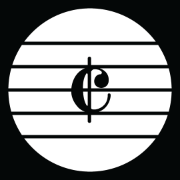Leaderboard
Popular Content
Showing content with the highest reputation on 07/14/2023 in all areas
-
Yeah that Eb in m.16 LH is fine to hold. For m.48, actually I think the clash will be fine since the RH is already a clash of chords between Bb/Db and Ab major chord, and I think you just have to change the crotchet note of the first beat to a dotted minim will be fine! I'm always scared of those parallel major 3rds. Those in the last movement of Beethoven's op.101 Sonata or Chopin's etude op.25 no.6 look ridiculous for me, as my hands are always too stiffened to play them smoothly 🤑... But it's always great to play your own piece to check the playability and modify the details, instead of composing works with unrealistic virtuosity and claim yourself the modern Liszt and Paganini. Henry2 points
-
I see what you mean. But I think m. 16 will be more acceptable with the bass note being held over into beat 2 and 3 as well, while in m. 48 there will be a conflict between the Ab and the G on beat 2. Thanks for pointing that out! I don't know what to do about that though. I've actually printed this piece out and have been learning it slowly. it is more difficult than it seems! Running up and down the keyboard with those whole tone, parallel major 3rds is not easy!2 points
-
Hi again, ladies and gentlemen. After some time thinking about what to post I thought that instead of uploading another nocturne I might ask you for feedback on my most recent video instead. The piece it contains is not very recent, more or less a year old. It's precisely the piece that preceded my first accordion sonata and my first piano sonata. I won't say much about it. It's my third piano waltz, it's playable, and it's hopefully decent. But you judge! • Here is the PDF & MP3: Free sheet music : Rodríguez, Daniel-Omicrón - Obra Menor Nº40 - Vals Ahorcado (Piano solo) (free-scores.com) • Since now free-scores possibly requires registration, for those of you who don't want to go under that process, you'll be able to find the PDF here in the post (but I do recommend registrating though, it's a great site full of hidden gems like YC): 40 - Vals ahorcado.pdf Here's the youtube video created via Piano VFX, OpenShot and Paint.NET: As always, I'm open to any feedback, comment, impression, thought regarding the piece (though it's a bit old but I may always consider your thoughts for my next pieces) the video, a part of it, both, or whatever 🙂. See you in the forums!! Daniel–Ømicrón.1 point
-
I feel kind of weird not posting as much music as I once did. I've been busy with music, but mostly learning songs from this band I'm in. Since this site has revamped a few times, a lot of what I've posted has been lost, so I decided to share some pieces I've written in the past as a way for anyone interested to hear some of the stuff I've done. Even though a lot of what I'll post in these here "archives" are works I probably won't edit or revise, I'm always open and would love to hear some of your thoughts and critiques for the future. This was an experiment with quartal and quintal harmonies, and building them with sustained and elastic chords. I remember trying to make music interesting without the focus being on a melody. The goal was to depict the ocean with lots of color and texture. I wanted odd melodic phrases to blend and blur. There weren't any intentions to extend this as part of a multi-movement suite or anything, but hey, if there were ever a prospect of a performance than maybe. I'm someone who loves to see a score, but sadly I wrote this entirely in Cubase so no presentable score. At some point I'll maybe notate it all out. I hope you enjoy!1 point
-
This is an old piece I dug up from many years ago. It was 32 bars long and lasted about 40 seconds so the whole second half was composed recently on the model of the first 32 bars. Let me know what you think - I added some dynamics so it's not always nice and quiet and lullaby-ish. Warning - heavy use of whole-tone scales included, although it does occasionally cadence in more traditional triads.1 point
-
I welcome the recovery of certain compositions that, in their day, for not being so connected or whatever, I did not listen to. I like this work very much. It certainly sounds impressionistic and I love that such use is made of the whole-tone hexatonic scale. Regarding certain moments being performable or not, in my opinion, they are. I don't think it's necessary to indicate pedal or anything. In these styles it's normal that all that is implied and you can either use the pedal or do a little arpeggio between the distant notes. (And if there are doubts, let's take a look at the score of the Ives sonatas).1 point
-
The truth is that I am very interested in all this about microtonality because I totally ignore if there is any theoretical corpus "to hold on to". It is a very wide world that I love, but it seems to me a bit unattainable, for the moment. This work, in any case, is totally impregnated by the original music. On the one hand the collage is too dispersed, from Mozart to Debussy... In some cases I think it works better than in others. In the first Mozartian part, it's like a tonal variation (not microtonal yet) and it's fine. The part from measure 72 I think it adds "morbidity" to the original and I also like it. But the part on Debussy doesn't fit me at all. I don't know, maybe in these "new" languages I assume better original works where there is not such a strong reference.1 point
-
Even though I'm fine in development, I find it hard to come up with themes and motives. Any tips for that?1 point
-
1 point
-
What type of music are you trying to write in? Depending on the style, certain stylistics can be seen as common elements in a style. For example, I love Baroque music and certain element to a Baroque theme could be seen being "stylistic" to the Baroque era. Or even if you're not trying to write in a particular style, what influences you musically?1 point
-
There's a technique that can be used to coming up with both the rhythms and the pitches of melodies that is called "Melodic Mining". It uses the rhythms and inflections of various spoken speech phrases to define the melody. Check out this YT video:1 point
-
I think "theme writing" is probably one of the hardest elements of music composition. Tchaikovsky was a master of this. Chopin was incredible as well (just listen to any one of his Ballades). Want to go more modern? Just listen to John Williams. As Carl said, improvisation is definitely key. It's how I compose my own music. But coming up with something that can be whistled or hummed is the way to go for good thematic writing. Want to go more obscure? Listen to Bortkiewicz's Piano Concerto 1. I give you an obscure example because it proves to you that even unknown composers like this Ukrainian composer has what it takes to write themes that rival the greats. And the trick is...all great themes can be sung, or whistled to. That piano concerto 1 has two main themes that you can hum to in the first movement. My homework for you is to pick them out. Listen very carefully to the first movement. And learn from Bortkiewicz's techniques.1 point
-
@Carl Koh Wei Hao I love this piece! The recording is well done, glad you took some notes around my piano nuancing techniques. I can still make some slight tweaks for you, and implement Music Jotter's realistic playback to make this sound like an actual pianist, in probably an hour's worth of time since you've done most of the work already 🙂 Also, your ending is perfect. I love how you utilize the left hand to create an awesome secondary voice. Let me know if I record this piece for you to use in one of my YouTube videos. This would be perfect for my Music Jotter "speed update" video. If yes, I would need the midi file which you can PM to me.1 point
-
Hey Daniel @Omicronrg9, I'm starting my digging of old posts no.3 here.... This piece, like Vince said, is full of energy. Again it appears to me very chic and fashionable. Your music for me is always like some monks living in the forest for decades and then laughing at us the foolish. So playful yet wise. I agree with Peter with the appreggiation issue, but for me that appreggiation is one of the factor making the music chic. playful and fashionable. I don't get bored by it given how well you twist your ideas and sometimes add voices for counterpoint and thicker texture. Lemme have some thoughts on each section: A: My favourite C# minor! It's great with all those introduction before getting into the main theme, making me to anticipate the coming of the real tonic. B: The opening triplet gesture with both hands in octaves reminds me of Chopin's Polonaise, like the beginning of the F# minor one or the middle section of the Ab major one. I feel like here it's the waltz proper with that LH waltz rhythm finally staying firm. C: I freakingly love modulation to A minor here, very cool, and the character is so playful here with the chromatic motive (and that surprising modulation). This is first of the DANIEL moment of the piece for me, even more so than the previous sections. And that modulation back, wow. You get from C major-F minor-V/Db and then back to F# minor. B': I like the rhythmic change here. AND when I reach A' section, WTF???? So beautiful here with that tempo transformation and added texture! The counterpoint is beautiful here. So pianistic here as well. C' section is a good ending to the piece, but for me it's more conventional here and less Daniel Omicron here than the previous sections, I don't know why. Nonetheless it's still beautiful here. Just like what Peter and Daniel said, you could have write music with more economical use of materials. But maybe that's a Germanic thought and maybe not fitting for your grand Spanish style? Idk. But for me the music is enjoyable to the point that I forget about the intellectuality of the cohesion of music here, so maybe that's an issue for your future music, but definitely not here. Thx for sharing this enjoyable music! Looks like my digging is ending here lol.... Henry1 point
-
Hey Peter, I'm still digging the posts lol... This is indeed a STRANGE lullaby which I enjoy! It's very fitting to use heavy whole tone scales here for its aimless direction for listeners to sleep well (which I want to now LoL), and combining those more traditional tonal chords with cadence help the music get back on track. Sometimes it's not whole tone like or tonal, like the opening---it sticks to a particular interval, like here it's the major 3rd (like the beginning of Prokofiev's sixth sonata) It's very playful here with the color change. But in b.16 and 48 if you press the sostenuto pedal, not only the right hand dotted minim chord will be held BUT ALSO that crotchet LH chord in the first beat. Unless the LH chord of the first beat are also turned to dotted minim, it is not quite possible to hold the right hand notes, but by doing so the effect will be very different. Thx for sharing! Henry1 point
-
This question can actually be rephrased as "How do you find inspiration to compose your piece" since developing themes and motives is a creative process. There isn't a general rule for coming up with these because it is pretty subjective. Here's what I can share with you: it is important that the themes or motives be formed naturally in your mind, and don't dwell on them and force ideas to come. Good ideas don't come in this manner. Creative ideas are often formed when you engage in certain activities, such as taking showers, exercising, and meditating. Your mind is relaxed when you perform these activities, and inspiration usually sparks this way. This is according to my experience. Good ideas are sometimes formed when you dream, and this works for me most of the time. Practising lucid dreaming is key to acquiring ideas for your composition, and these ideas are usually better than the ones you come up with when you are awake. Improvisation is another method. If you just can't come up with good themes or motives, go and pick up your instrument and start playing whatever comes to your mind. Try out different possibilities and hear which one sounds the best to your ear. That is how I find inspiration for my compositions; however, other composers may have different ways of doing this. I hope this helps. Carl Koh Wei Hao1 point
-
Hi @Beethoven is God, I have absolutely no clue on how the themes and motives are bron, since they always come with me in sudden realization and inspriation, and then I will start analyzing it for development and ask my muse for more inspiration. That's one of my weak aspect too. I only know that I have to keep the music as flowing as possible by creating a special temporal experience. Henry1 point
-
I know structure and I know using motives, just the problem is exactly this: How do I come up with good rhythms?1 point
-
It's all about structure. You'll want to learn about things like sentence and period form, it generally should fit within either 8 or 16 bars. The apex of the melody is also important: It should only have one highest or lowest point that is not repeated in the same phrase. A very good starting point, and something of vital importance, is the rhythmic pattern of the melody. All successful themes are easy to identify in the absence of pitch. So just start by coming up with a rhythm that you like, and then put the pitch to it after. To give you an idea of how strong this is: "Joy to The World" is literally just the major scale descending, one note at a time. The rhythm is what makes it into music.1 point
-
I often think on my past pieces in terms of "what if I had done X". I then discard editing those pieces significantly. This is subjective of course, but for all my pieces I kind of follow a rule that says "If you wanna do something you didn't do there, start another piece" or something like that. It is true now that I listen to it that the final could have been developed a bit more and that I used lots of ideas which is not always what I want. Nowadays I believe I am starting to control this and focusing in not putting a lot of meat in the oven but in cooking it properly in some works at least. That said, thank you for the detailed feedback, I am really glad you enjoy my pieces! Kind regards, Daniel–Ømicrón.1 point
-
Great work here! Lots of fantastic energy and exciting ideas. I really like the one at the C section, as well as the theme at 5:00 right before the C theme again. As I said in my comment for one of your other pieces, I really enjoy your ideas and style. You have a lot of originality, and you didn't disappoint once again. Maybe I missed the mark, but one thing you could perhaps improve on for the future is development. I felt like more ideas could have stemmed from previously introduced themes. You have no shortage of material, but it felt like you had enough material to write 2 or 3 different pieces. Just a thought though; a lot of metal music is written with a barrage of ideas without tons of development, so it can work. Another example would be bringing back the long V chord idea at the end of the intro. Or even that rhythm you have in the left hand at 5:58 for your coda. It would have been cool to keep that going as a final hoorah. Overall though, well written piece as usual! Great ideas and I loved the exciting energy of this piece. Thanks for sharing!1 point
-
1 point
-
Hi, nice work. This is a never boring piece with some good contrasts, I particularly enjoy the way some energetic parts lead to other iconic sections. Buen trabajo, también me parece muy idiomático para el piano. Saludos.1 point
-
Hi Peter. My idea yesterday was to just make a post and go but I could not resist looking at some other posts and well eventually I spent some hours on that lol. As I said before somewhere, I enjoy listening to all you guys' pieces and spending time in this forum, plus flooding it with my pieces doesn't seem beneficial to me nor to anybody else. Regarding your comments: I will definitely take a deeper look into Bach and other Baroque composers, the overuse of arpeggios you mentioned may be true, this piece definitely has some in sections like M32-54 but I am not sure if it's a constant in all my pieces, though I must say there's another waltz of mine that possibly has even more of that. In any case, I believe there's still a long path to walk on. Specially at that time, I wasn't nearly as productive as I am now, nor I did not consume music the way I do now. Regarding the overflow of complex ideas I do think this is something I am starting to control. There are some pieces of mine in which I intentionally present many ideas though we can agree this is not very effective. At the time I composed this I wasn't thinking on my pieces on those terms so I could not have seen this. I do see it now, how the different sections of this piece are perhaps too many and too different for the time it lasts. Thank you for your feedback, it is always fulfilling to read criticism that makes me analyse my own pieces or look at them by a different perspective. Kind regards, Daniel–Ømicrón.1 point
-
Hey - first I just wanted to say thanks for all the great reviews and observations you've been dropping around the forums both on other members pieces as well as my own. I hope you'll always know that you're a valued member of this community. I love the many differentiated dynamic levels you present in this piece. The piece seems like it's always going somewhere, whether through gradual changes in dynamics or gradual changes in tempo. I enjoyed listening to this piece over and over while writing this review. That said I think you overuse arpeggiation as your main melodic material. I'm kind of used to it by now and actually enjoy it but your melodies tend to start to sound like harmonic noodling after a while. They seem to wander up and down the keyboard sometimes seemingly aimlessly and are interspersed with haphazard and jarring rhythms and the aforementioned arpeggios. I think to improve on this tendency you could either play or analyze some Bach, whether the 2 or 3 part inventions or any of your favorite inventive or fugal pieces and notice how self-similar and concise the melodic material is. It's most likely constructed out of a few very short and simple melodic fragments that are then manipulated through elongation or concatenation or inversion etc. Your piece on the other hand has a bunch of unrelated complex ideas thrown at the listener in a relatively short amount of time. And you connect those ideas with harmonic fluff. Not that I didn't enjoy it though - many spots show lots of character. And maybe you consider the characteristics I mentioned as the constituents of your individual style. If that's the case then it's just a matter of taste and you can disregard my complaints. Thanks for sharing though - I hope you continue to post your music and hopefully my comments were at least a little helpful.1 point
-
I think it may be possible to put an "Sost." or "Sost. Ped." attached to the typical pedal line to clarify. Probably anyone who tried performing it would have guessed it anyway. 👍1 point
-
Thanks! Yes it should definitely be playable. It's basically just a bunch of parallel thirds LoL. I guess I should have included this in the score somehow although I don't know what the notation looks like for this but those measures are supposed to be performed with the help of the sostenuto pedal (letting the notes depressed at the beginning of the measure continue to ring while the staccato notes on beat 2 and 3 are played). Thanks for your informed remarks!1 point


.thumb.png.8b5b433a341551e913a34392660bc95b.png)



